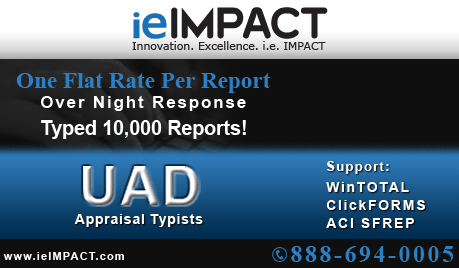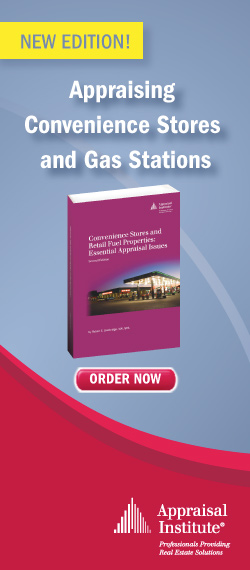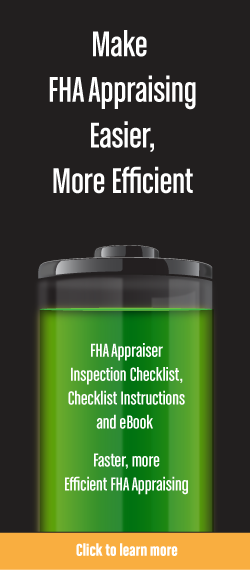
|
Published by OREP, E&O Insurance Experts | Feb. 13, 2012 | Vol. 244 |

|
> Surveys
> Blogs
> Leave Comments Below |
It is not about making
competent and ethical appraisers “sweat the small stuff” of USPAP in court,
he says, but about keeping them out of trouble.
Editor’s Note:
Last
issue, Richard Hagar, SRA, explained how and why some appraisers get into
trouble. It’s not about making competent and ethical appraisers “sweat the
small stuff” of USPAP, he says, but about keeping them out of trouble. The
problem, Hagar says, is that appraisers have much more to worry about than
USPAP. Also, find more below on the $25 billion landmark foreclosure settlement
last week between banks and consumers. Hagar gives an insider’s take, including
some good news for appraisers.
Liability Follow Up: Sweating the Small Stuff?
By David Brauner, Editor
According to Richard Hagar,
SRA Fannie Mae and Freddie Mac are recovering upwards of $1.5 billion each
month, according to their financials*, from lenders, mortgage brokers, borrowers
and appraisers. Hagar, who wrote last issue’s
1,000 Appraisals a Year,
says that this is something every appraiser should know.
It is not about making competent and ethical appraisers “sweat the small stuff”
of USPAP in court, he says, but about keeping them out of trouble.
Some readers point out that issues highlighted in 1,000 Appraisals a
Year as getting appraisers in trouble in court are not even violations of
USPAP. So what’s the problem?
The problem, Hagar says, is that appraisers have much more to worry about than
USPAP. “There are other issues that come into play in addition to USPAP; Fannie
Mae requirements, Interagency Guidelines, state and federal laws and the
Certification appraisers include in every report,” Hagar says. “If you’re only
focusing on USPAP, you need the kind of education we’re presenting (in the
Webinar
Series- see below).”
Hagar says some of the
comments posted
to the story show that certain appraisers are not fully aware of the high
standard they are being held to. And he insists this is not “his take on things”
but opinions of the courts and that many appraisers need to be made aware. The
bottom line is learning how to be the kind of appraiser who does not get sued.
“When a lender, any lender, including Fannie Mae discovers a bad report, even if
it’s years later, they have the right to sue the appraiser for the bad product,”
says Hagar. “By the time our consulting firm is brought into the picture, the
bank has selected the bad loans/appraisals, filed the lawsuits and determined
how much money they have lost due to the bad loan. Who do they blame? Well, they
don’t blame themselves. They blame the appraiser and since the appraiser signs a
Certification fully accepting liability for their work, they get sued and they
get sued for BIG BUCKS. In the example I provide (in 1,000 Appraisals a Year),
every appraisal I reviewed was bad. The bank chose to sue the appraiser for only
ten appraisals out of hundreds.”
Hagar continues, “What matters is the quality of the appraisal, the information
gathered and the process and analysis utilized in its creation. The value
conclusion is NOT the only thing. Yes, some banks and AMCs have failed to
follow the rules and should be held accountable. But appraisers are responsible
for the quality and information contained in their work.”
Hagar says, please don’t “shoot the messenger.” “My point for the article and
Thursday's
webinar (see
below) is to warn appraisers, help them understand the system, their liability
and the massive toll these lawsuits take on the professional and personal lives
of appraisers. All due to poor appraisal practices. The webinars will attempt to
convey the lessons I’ve learned over the last 30 plus years appraising and as an
expert witness in dozens of lawsuits.”
*
Fannie Mae Financials
*Hagar's Webinar:
1,000 Appraisals a Year: Realities of Appraiser Liability
Don’t Believe Everything You Hear: $25 Billion+
By Richard Hagar, SRA
The settlement announced on
February 9, 2012 has costs and benefits far greater than $25 billion.
I received my phone call from the Washington State Attorney General’s office
sometime before midnight the night before the announcement. The AG invited me to
be part of “a big announcement” that would take place the following morning. For
years I’ve been communicating with the staff of several State Attorneys’
General. We’ve profiled what was wrong with the foreclosure process and supplied
real world examples of bad policies and procedures. In addition, I’ve supplied
training regarding the foreclosure “rescue,” short sale, loan modification scams
that harm home owners and lenders.
After the announcement a select few of us were given a personal two-hour
briefing concerning the details. Allow me to share some of my insider’s
information:
1. While $25 Billion is the public figure, the cost to the banks will be far
greater, likely to hit $45 billion.
• There are additional costs for enacting major changes in bank policies and procedures.
• Increased time for foreclosures to be processed, including costs associated with additional notifications and time for borrowers to modify their loans.
• Banks will hire and train hundreds, if not thousands of people to handle the new foreclosure process and eliminate robo-signing.
• New office space, phones, desks, supplies.
• Payments to attorneys representing the banks.
• Costs associated with oversight by a new special “headmaster.”
• New reviews of foreclosure
files, by better, more expensive attorneys.
2. The $25 billion is only
applicable to approximately 20 percent of all residential loans; loans that are
held by these five banks. Issues regarding the other 80 percent of the
residential loans, held by Fannie Mae, Freddie Mac and smaller lenders, are not
part of this figure. Additional settlement discussions are underway and more
money will be involved.
3. Several of the banks have already agreed to “separate settlements.” I call
them penalties that are in addition to the $25 billion. The additional
settlements will be in the tens of billions.
4. Bank of America previously agreed to an $8.9 billion settlement, not covered
in this February settlement. Wells Fargo announced their latest settlement the
following day.
5. Lawsuits regarding the “MERs question,” along with the non-payment of
recording fees to local governments and criminal behavior, are not covered under
this settlement.
Good News for Appraisers
Three billion
dollars is allocated to refinancing, which carries its own internal
administration. When a borrower asks for a “loan modification,” usually no
appraisal is required. However, under the Settlement, many owners will be
refinancing instead of modifying their loans. Refinance requires a new
appraisal. More work for appraisers. If the borrower has a disagreement about a
loan modification or the value stated by an AVM, the borrower can request a
“full appraisal.”
About Richard Hagar
Nationally recognized author, instructor and fraud expert, appraiser Richard
Hagar, SRA puts a spotlight on appraiser rights and responsibilities. Learn from
an appraiser with thirty years’ experience.
Hagar is presenter of the upcoming Webinar,
1,000 Appraisals a Year:
Realities of Appraiser Liability. This series of webinars will
help every appraiser provide better quality appraisals and keep safe from the
increasing threat of lawsuits. The goals are better quality appraisals and lower
liability. To learn more and sign up for Richard's Webinar,
click here.
ATTENTION: You are receiving WRE Online News because you opted in at WorkingRE.com or purchased E&O insurance from OREP. WRE Online News Edition provides news-oriented content twice a month. The content for WRE Special Offer Editions is provided by paid sponsors. If you no longer wish to receive these emails from Working RE, please use the link found at the bottom of this newsletter to be removed from our mailing list.



